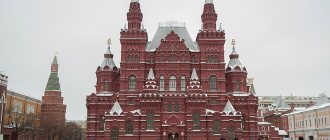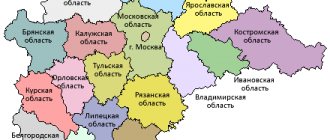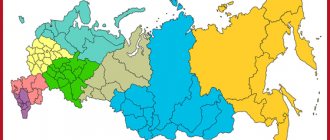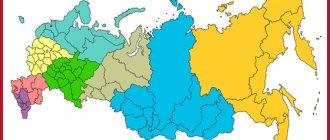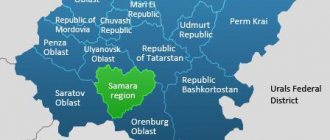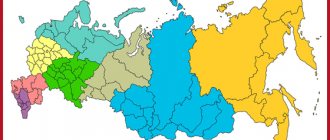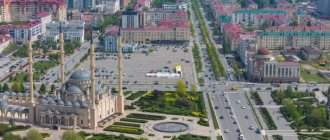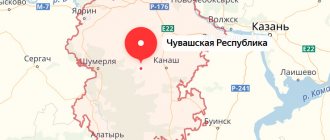Where is Lipetsk?
Lipetsk is the administrative center and capital of the Lipetsk region, which is located on the same latitude as the major European cities of Amsterdam and Berlin.
The city is located in the European part of Russia, the distance to Moscow is about 460 km. Lipetsk is located on the Voronezh River (on both banks) in the forest-steppe zone of the temperate zone, right on the border of the Central Russian Upland. The approximate population of the city is 510 thousand people. The total area of Lipetsk is 330 square kilometers. Nearest large cities: Tula, Moscow, Yelets, Novomoskovsk, Saransk, Nizhny Novgorod, Orel, Kursk, Belgorod, Sumy, Saratov, Voronezh, Volgograd, Kaluga. The city center of Lipetsk is located in the hills near the mouth of the Kamenny Log and in the lowlands of the Lipovka River. The length of the city from west to east is 27 km, from south to north – 22 km. The climate in Lipetsk is temperate continental. The annual precipitation rate is 500 mm, with maximum precipitation occurring in July.
Lipetsk is in the same time zone as Moscow, the offset relative to Coordinated Universal Time (UTC) is +3.
Tourism in the Central Federal District
You can read more about tourism and the attractions of the Central Federal District in the descriptions of the regions. The district is very attractive for tourists; there are both natural and architectural attractions. Moscow alone attracts millions of tourists every year, but there is also the Golden Ring of Russia and hundreds of other interesting places.
From a tourism point of view, the Central Federal District stands out from almost all other districts due to its developed transport infrastructure. Almost any part of the district can be reached without problems, and there is no need to talk about popular and famous places.
Lipetsk Airport
The city of Lipetsk has an international airport, which has the status of federal significance. Airport type: civil. The airfield is located 15 km northwest of the center of Lipetsk. Nearby is the village of Kuzminskie Otverzhki. The airport operates 24 hours a day. To get to the airfield building you need to use public transport or taxi services. Passengers are also provided with the possibility of an individual transfer. The airport building was built in 1966.
The most popular destinations of regular and charter flights: Kaliningrad, Moscow, St. Petersburg, Kazan, Yekaterinburg, Gelendzhik, Adler, Voronezh, Simferopol, Anapa, Murmansk, Minsk, Rostov-on-Don, Sochi, Sochi. Lipetsk airport serves flights of major Russian airlines: RusLine, S7 Airlines. The annual passenger traffic is 57 thousand people.
The airport runway has an asphalt concrete surface. The airfield received international status after reconstruction in 2015. Then the first international flight Lipetsk-Milan was made from the airfield.
Statistics on population and demographics
If we consider the cities of the Black Earth Region, then Lipetsk ranks first among them in terms of population growth and second in terms of its size. In 2014, statistics were collected showing that the city had a population of more than 510,000 people. Half a century earlier in Lipetsk the number was 123 thousand.
From 2022 to 2022, the local population decreased by 9 thousand, but this figure is so small that it does not change the overall picture of the demographic situation. Most likely, the changes occurred due to the fact that part of the adult population left to work in the capital, others did not want to take the census, and others were simply not registered.
Population dynamics of Lipetsk
Moscow is close, earnings in the capital are many times higher, so many people go to improve their financial situation or earn money for an apartment. But, having saved the required amount, Lipetsk residents most often do not move to the capital, but return to their hometown: it is quieter here, life is cheaper, and apartments are more affordable.
Train Station
The Lipetsk railway station of the Michurinsky region of the South-Eastern Railway is located at st. Gagarina, 106. The two-story station building was built in the 1960s. In 2003, the railway station was completely reconstructed: the windows were replaced, the facades were painted, and the clock mechanisms on the tower were restored. Passengers can get to the railway station building by public transport. There is free parking for cars on the station premises.
The most popular long-distance train destinations: Moscow, Baku, Kislovodsk, St. Petersburg, Vladikavkaz, St. Petersburg, Adler, Voronezh, Minsk, Mineralnye Vody, Anapa, Saratov, Volgograd. New destinations are added in the summer season: Sukhum, Anapa, Novorossiysk, Yeysk. Lipetsk railway station also serves commuter trains.
In the station building, passengers have access to a café, storage lockers, a medical center and a spacious waiting room.
What do migrants need to know?
Lipetsk and the region have a clear advantage over other areas. The region is located in the most developed part of the country. The region produces various ferrous metallurgy products (rolled products, steel, cast iron), household appliances (refrigerators, tractors), and food products. From the total production of the country in the region they produce:
- Household freezers and refrigerators - 40%.
- Granulated sugar - 8%.
- Tractor cultivators - 22%.
- Canned fruits and vegetables - 25.2%.
- Tractors - 7.1%.
- Cast iron - 19.2%.
- Finished products - 15%.
- Mineral waters - 7%.
Thanks to highly developed agriculture, the metallurgical industry and other areas of production, you can quickly find work with a good salary for specialists in various professions.
Employment structure by industry sector in the Lipetsk region
Bus stations of Lipetsk
The bus station in Lipetsk is located at Pobedy Avenue, 89, not far from the Ring Square. Opposite the main bus station building there is a plumbing store called Santekhtsentr. The station operates 24 hours a day, without weekends or long technical breaks. You can get to the bus station building by public transport or taxi.
Buses depart on more than 80 routes every day: Ivovo, Chistaya Dubrava, Casino, Novoe Dubovoe, Michurinsk, Verkhniy Telelyuy, Penza, Mokroye, Stanovoe, Lebedyan, Borovoe, Usman, Fomina-Negachevka, Krasnoe, Yelets, Dolgorukovo.
Features of life
In many ways, the standard of living of each person is influenced by the cost of food. Prices for different types of their types are almost no different in the region from all-Russian ones. Below are the averages for the city and region:
- Granulated sugar - 33 rubles/kg.
- Milk - 39 rub./l.
- Chicken egg - 40 rubles/des.
- Fish - 290–310 rubles/kg.
- Beef - 335 rub./kg.
- Apples - 45 rubles/kg.
- Potatoes - 38 rubles/kg.
- Flour - 47 rub./kg.
- Bread - 30 rubles/kg.
- Boiled sausage - 190 rub./kg.
Thus, food prices remain affordable, and their range is pleasantly surprising. In the city's shops you can buy everything from the most necessary products to seafood, Camembert cheese and many other delicacies.
Automobile highways
Two federal highways pass through Lipetsk:
- P119 is a federal highway with a total length of 395 km. The highway connects 2 cities - Tambov and Orel. The route passes through the following cities: Lipetsk, Livny, Yelets. Road surface: asphalt.
- A133 is a highway that has the status of federal significance. The length of the route is 45 km. The road starts from the M4 Don highway and runs to Lipetsk. Road surface: asphalt.
What is Lipetsk famous for?
Lipetsk is known for the fact that the city is considered one of the largest centers of steel and rolled metal production. The city is also home to a popular pilot training center. One of the main attractions of Lipetsk is Peter Square. There are singing fountains, a monument to Peter I, parks and the Green Theater here. In the Soviet district of the city there is Cathedral Square, where the Nativity Cathedral was built in the mid-19th century.
On Plekhanov Square there is a monument to the founders of Lipetsk. The monument was erected in 2008. On Victory Square, city tourists can see the “Victory Stele” monument, whose height is 38 m.
HOW LIPETSK BECAME A PROVINCIAL CITY?
On the eve of Christmas, the Lipetsk region celebrated its 60th anniversary. On January 6, 1954, the Decree of the Presidium of the Supreme Soviet of the USSR on its creation was adopted. The new region included lands with settlements in the Ryazan, Voronezh, Kursk, Tula, Tambov and Oryol regions. But why was Lipetsk chosen as the administrative center of the new region, because among the cities included in it were Yelets, Dankov, Usman, Lebedyan, Zadonsk - settlements with a rich history and centuries-old urban culture? Yelets was once the capital of the ancient Russian principality.
Before 1954, Lipetsk could once have become a provincial city - immediately after the revolution of 1917, when the Tambov provincial executive committee (Lipetsk was a district city of the Tambov province) lost control over the region, and Lipetsk, on the contrary, gained strength. Then the Lipetsk residents were hindered by a complex of deep provincials, and the Lipetsk revolutionary deputies refused the offer to govern a huge province, including the entire present-day Tambov region.
AND THE REGION COULD BE ELETSKAYA
By the 50s of the last century, Lipetsk, which grew out of a factory settlement, remained a small town with a population of 38 thousand people, while neighboring Yelets had more than 120 thousand citizens. However, in Lipetsk by that time there were the Lipetsk Metallurgical Plant (current NLMK), a metallurgical plant, a radiator plant, and, as they say today, a whole metallurgical cluster had formed. The country needed a powerful breakthrough. The government recognized the powerful metallurgical potential in Lipetsk and decided to create a new administrative unit. True, it was originally planned to make Yelets its center, and the new region was to be called Yeletskaya.
“In fact, at that time the issue of creating the Yelets region with a center in Yelets was considered,” says Igor Kozmirchuk, head of the Foundation for Scientific Local History. — Yelets was a large city with a rich history and powerful economic potential. It is worth noting that in 1846 Yelets was equalized in trade rights with provincial and port cities. In Yelets in 1888, the first elevator in Russia was built, trade, banking, and the leather industry developed, and the production of tobacco and shag was established. Part of all this remained after the revolution. In addition, the city was already a large railway junction with the appropriate infrastructure, there were many schools and hospitals in Yelets, and a pedagogical institute was created in 1939 (now Yelets State University named after I. A. Bunin). In a word, everything was ready for a whole region to begin to take shape around Yelets. And most importantly, the plans of the Council of Ministers of the RSFSR included the construction of a metallurgical plant in Yelets. Moreover, it was planned to develop not ferrous metallurgy, which settled in neighboring Lipetsk, but non-ferrous metallurgy. In Yelets they were going to build a copper foundry that would operate on imported raw materials. But any metallurgical production at that time required a lot of water. And to create a reservoir it was necessary to block Bystraya Sosna, flooding the Zasosnenskaya part of the city and relocating people from there.
After weighing all the pros and cons, the country's leadership considered it too costly. After which attention was paid to Lipetsk with an already developed metallurgical infrastructure and an existing LMZ, which it was decided to raise to the level of an industry giant, which later came to fruition.
TWICE IN THE ONE RIVER
“Surprisingly, it was metallurgy that twice gave a powerful impetus to Lipetsk,” continues Igor Kozmirchuk. — There is a certain historical pattern: at the beginning of the 18th century, Peter I was conducting active military operations in the South and North of the state, the need arose for the development of metallurgy, primarily for the manufacture of weapons, and metallurgical Lipetsk appeared on the map of the country, that is, initially Lipskaya Sloboda with factories. 76 years pass, the settlement becomes the district city of Lipetsk, but metallurgy, having given it life, practically dies. 175 years later, in a completely different state, the USSR, the need for metallurgy again appears, which gives a new impetus to development, first for the city, and then for the entire region. All paths converge here in Lipetsk: nearby is the Kursk magnetic anomaly, the raw material base of the Belgorod region, convenient transport interchanges - the intersection of roads between North and East, West and South. Very quickly, a “redistribution” of the territories neighboring Lipetsk was carried out, and a new administrative center with a major metallurgical giant began to be born.
It should be noted that the territories included in the Lipetsk region were, one might say, “waste” for neighboring regions. They were their remote outskirts, and when they became districts of the new region, and located close to the regional center, they benefited. The leaders of the Kursk, Oryol and Ryazan regions honestly admitted: one day was not enough to visit these remote areas. Lack of paved roads, poverty and outback - this is what the territories that were transferred to the Lipetsk region represented.
WHO "HAS COME IN FULL" HERE?
The construction of NLMZ-NLMK - a giant of metallurgy, and other enterprises, also not small, took place in parallel with the construction of, in fact, a new city, a new Lipetsk. And in twenty years there was a colossal leap: the population of Lipetsk increased by an order of magnitude - from 38 to 350 thousand. Unfortunately, at the same time, the historical appearance of the city, all its cultural monuments from the times of Peter the Great and Catherine, and most of the churches were almost completely destroyed. Modern infrastructure was being built, microdistricts with spacious streets and avenues, in which hundreds of thousands of people were to live, building the new Lipetsk.
Who were they, these new Lipetsk residents? At the everyday level, many believe that for the most part Lipetsk was built by yesterday’s peasants, who flocked to the city “for rubles” and free apartments, and by “chemical prisoners” who were herded to all-Union construction sites. There was even a statement that today's Lipetsk resident is a boorish, poorly educated, uncultured type. The Internet is replete with comments on this topic: “Lipetsk collective farm”, “Lipetsk cattle”. They even try to decipher the word “redneck” as “resident of the Lipetsk region.” Lipetsk residents sometimes reward themselves with such offensive epithets.
“But this is absolutely not true,” Igor Kozmirchuk is sure. — In fact, there are not so many native Lipians, probably about five percent. These are those Lipetsk residents whose several generations lived in the city. But who came? In order to build enterprises and work for them, specialists were needed first of all: builders, engineers, metallurgists, foundry workers. Collective farmers were needed mainly for auxiliary, unskilled work. There were, of course, residents of distant villages who came to work, and “chemist prisoners,” but they did not form the backbone of those same Lipetsk residents. Lipetsk metallurgy was created by specialists from regions where this industry was already well developed: the Dnepropetrovsk region, Zaporozhye, the Urals and Siberia. They founded dynasties here that are still known today. I will name only one surname - Frantsenyuk... So those who built the new regional center cannot be called “lapotniks” or “collective farmers”.
By the way, new microdistricts and multi-storey buildings were erected by specialists from Moscow, Leningrad, Kyiv, Minsk, many of them stayed to live here. It should also be remembered that Lipetsk historically developed as a city of aviators, where even before the revolution there was an airfield with those very first Ilya Muromets aircraft, and after the revolution the largest aviation school operated. Those who were involved in Lipetsk aviation are also very literate and very educated people. But even if we take the indigenous Lipetsk people, these were also the descendants of those who were involved in metallurgy here in Peter’s times. So Lipetsk residents, who are critical of their fellow countrymen, needlessly think poorly of themselves, and even more so of their ancestors.
WHAT'S IN THE PERSPECTIVE?
“Will the Lipetsk region survive on the map of Russia as a federal subject?” - This question probably worries many today. First of all, in light of the administrative reforms being carried out in the country and the consolidation of regions. Perhaps none of the residents of the region, which celebrated its 60th anniversary, knows a definite answer. The consolidation of regions - the annexation of weak, poorly governed ones to stronger ones - according to the logic of action, does not apply to the Lipetsk region. In terms of basic economic and social indicators, we are no worse than our neighbors, and in some respects we are among the leaders in the federal district. Which region should Lipetsk be annexed to? To Tambov, Voronezh? Or vice versa? The same questions are asked in the Belgorod region, which is the same age as the Lipetsk region. In recent history, it should be noted that there was already a precedent: in the 20s of the last century, the Central Black Earth Region existed. The authorities quickly abandoned the existence of such a colossus with a population of millions, poorly managed in the economic and political aspects of the territory. An attempt to save on the number of managers and bosses, on the contrary, led to an increase in bureaucracy. But, as they say, everything flows, everything changes, everything moves forward. But, most likely, the Lipetsk region will continue to be independent, and perhaps someone will join us, rather than us joining someone else. Now for us, residents of the region, the most important thing is to continue the difficult path of historical self-identification precisely as a cultural community - the Lipetsk people. To do this, the younger generation needs to know the history of their native land, the history of villages and towns in the region. At one time, there was a lot of talk about the introduction of compulsory local history lessons in schools. But instead of local history, other, apparently more important subjects appeared in the curriculum, aimed at shaping the historical and moral consciousness of the younger generation. When every young person knows what happened here at different times, what people were born on our land and what their contribution to the history of the country was, when we finally begin to take care of cultural and historical monuments, then it will be possible to boldly and proudly declare: Lipetsk region and Lipetsk residents as a cultural community as an “independent project” - took place.
(The material used fragments of I. Kazmirchuk’s interview with the Gorod48 website).
